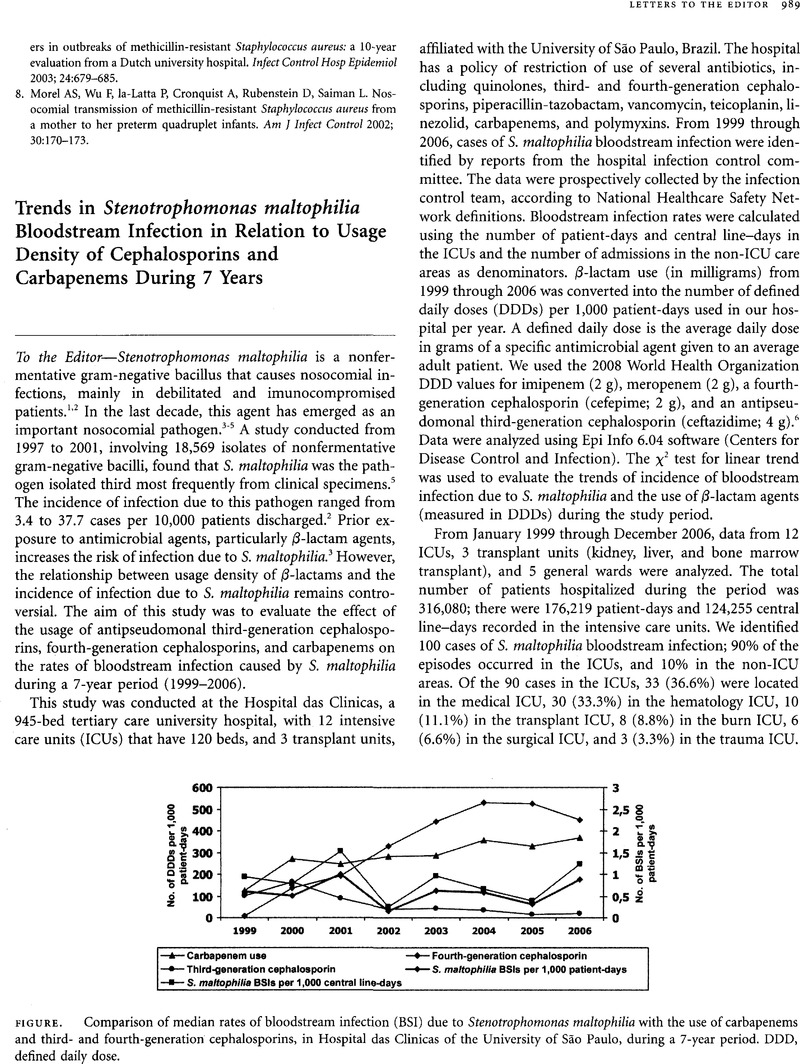Crossref Citations
This article has been cited by the following publications. This list is generated based on data provided by Crossref.
AL-HASAN, M. N.
ECKEL-PASSOW, J. E.
and
BADDOUR, L. M.
2011.
Influence of referral bias on the clinical characteristics of patients with Gram-negative bloodstream infection.
Epidemiology and Infection,
Vol. 139,
Issue. 11,
p.
1750.
Abbott, Iain J
Slavin, Monica A
Turnidge, John D
Thursky, Karin A
and
Worth, Leon J
2011.
Stenotrophomonas maltophilia: emerging disease patterns and challenges for treatment.
Expert Review of Anti-infective Therapy,
Vol. 9,
Issue. 4,
p.
471.


